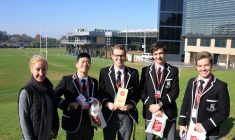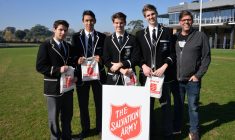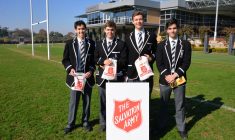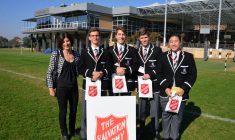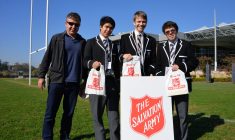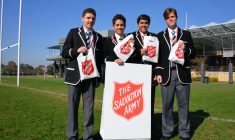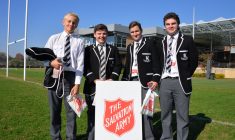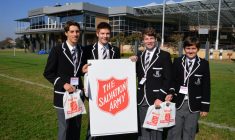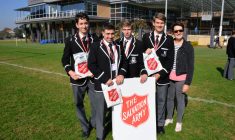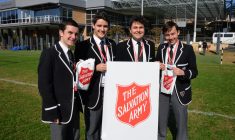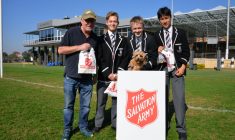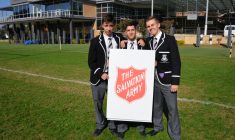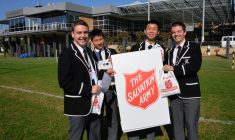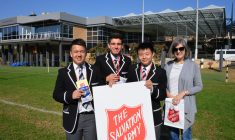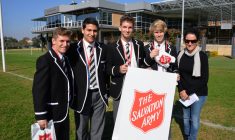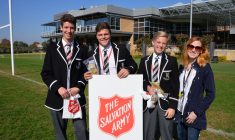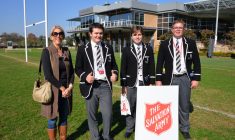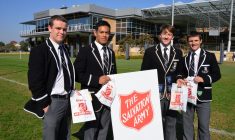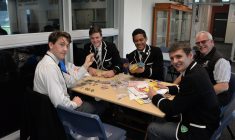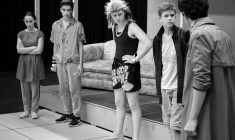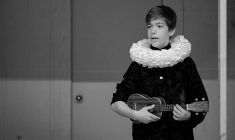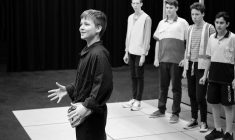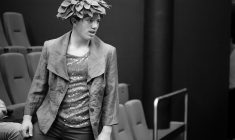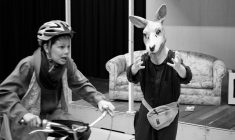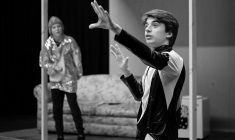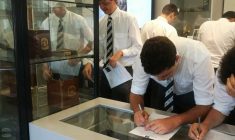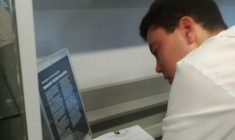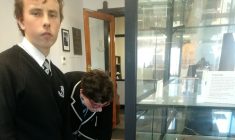Cars in classrooms
I have 20 boys in my senior Economics class, all with their own laptop. What proportion of them do you think have screensavers of images of cars?
I am not sure the answer would be different had I done a survey years ago of cut-out pictures stuck on the covers of foolscap folders or hard-copy diaries.
Cars have a pivotal, even mythical, place in the lives of young men as they slip into adulthood. When I talk to my father about what it was like learning to drive, he drags out the photo albums and shows me pictures of himself standing next to a Mini Cooper in the mid-1960s. He tells me about driving it to Queensland with a transistor radio sitting on the passenger seat because the car didn’t have a radio, and how many layers of clothes he wore on the trips to Canberra because it wasn’t just music it came without – it didn’t have a heater either.
The same conversation with me would draw out photos from the 1980s of a 16 year old standing next to a Datsun 200B with L-plates, pastel yellow exterior, beige inside as far as the eye could see. It had retractable seatbelts (a revelation). It was air-conditioned… if you wound the windows down and weren’t stopped at the lights. That airflow frequently meant I lost my page on the street directory perched on my lap as the speed picked up.
Friends recently told me their son had just got his licence and was getting to and from school in a nondescript, late-model hatchback. They felt good about him driving it – it is full of airbags and the anti-lock brakes give him more control than I ever had at his age. He has sat-nav and his music is being streamed via Bluetooth.
It is fun to reminisce, but we don’t really want to be back in those days, driving cars with questionable brakes. Research, development and technology have made our commutes safer, more comfortable and, well, better.
We could have the same conversations about our school days. We remember what it was like to sit in a classroom, where we sat and who we sat with. We remember the teachers whose attention we avoided, those who made us laugh, and those who inspired us.
How often, when we look at the journey our boys are on at school, do we wish our boys were having the same experience we had?
Would we hope they were driving the same cars we were?
I hope the classrooms of 2018 do not resemble the ones I sat in during the 1980s.
Educational researcher Steven Heppell (2005) observes that in the past 30 years we have become very good at designing rooms to minimise heat-loss, but questions whether we have put the same thought into designing spaces that minimise the ‘learning-loss’ of the students that sit within them.
Over the past six years we have relooked at each of the teaching spaces at Newington, from the Science laboratories to the library through to the classrooms in buildings that were first put up in the 1930s. Teaching in the rooms in the Nesbitt Block when Sydney hosted the Olympics was a very different experience to the ones I had yesterday. Four solid walls and solid doors hid everything that went on in my classes from the outside world. There was a raised platform (the ‘stage’) at the front of the room under the whiteboard that literally put me on a pedestal, and the room was full of rows of the heaviest furniture I have ever seen in a classroom. I didn’t go to Newington as a boy, but it was the same as countless classrooms I sat in during my high school years.
The change in our learning spaces is visible, and makes the learning that boys are engaged in accessible. In some ways all the glass embodies our long-standing partnership with Mark Church from Harvard University, which has challenged staff to make their students’ thinking visible so they better understand how they learn and their teachers can work alongside them rather than in front of them. Yesterday, there was no desk for me as the teacher and what I projected on the big screen was also on the boys’ devices. The layout of the furniture changed twice during the lesson as what we did changed. Maybe that is our way of saying there are different things that should happen in a room at different times of the day. Maybe it is saying, as Walden (2009) would argue, that in any school the spaces we put our students in are their ‘third teacher’ alongside their staff member and their peers in the classroom.
Organisational theorists would argue that our ideas about what schooling looks like is underpinned by “big assumptions” – deeply held beliefs about the way things are (and possibly should be) born from our own experience. The Datsun was dependable, outside of one Friday-night that was remedied by a call to the NRMA from a payphone. It took us from home and then back again pretty successfully. High school was the same for me: it took me from a 12 year old to an 18 year old ready, and inspired, to go to Sydney University. My car did not have BYO devices, and neither did my school’s classrooms. By the end of my Year 12 both had sheafs of handwritten notes scattered through them that I had copied from boards or summarised from books. Experiences like these shaped my view of what learning looked like.
Kegan and Lahey (2001) in the Harvard Business Review note we all hold “big assumptions” because they help us “put an order to the world”, but also to identify things that are “out of order”. A deeply held belief we all share is that we want every student in the College to make meaningful and substantial academic progress as a learner, and at any point in time be capable of more than they were the day before. It is in many ways our core ideology, or the ‘defining character’ of the College, as Collins and Poras (1996) would phrase it. We want our boys to be better, and we make a commitment to it.
So how often do we as a school and community recognise the tension between us wanting the best for our boys and wanting them to have an experience that is familiar and comfortable to us? Is one of the biggest challenges we face as a school community acknowledging that our commitment to our students’ success may be at odds with our assumptions of what schooling looks like?
Maybe the conversations we have about what schools are like should be more focussed on the core aims of schools across generations rather than the things we see. The ability to consume and analyse information, to critically reflect on it, to draw diverse threads together to solve problems and to communicate it all succinctly and substantively is what schools are about, not the pattern of how the desks are laid out. Or, the chance to build (and learn how to build) significant relationships with people, be they our teachers or our peers, then to navigate them when they become tricky. At each point in our history, I hope our school brought all the research and expertise it could access to bear to ensure it was best preparing its boys for the world they were graduating into as men. As a goal, I don’t think continuing to do that is big or audacious. Innovation for the sake of better outcomes for our boys does not stop when we have done something different, it will only stop when we no longer challenge ourselves to do better.
I don’t think that I would show my Economics class a picture of me with my first car – I worry they’d only remember the hair of the 1980s P-plater in the shot, then remind me of it in class for the rest of the year). I am glad none of them need to start that Datsun, then let it run for 10 minutes on a cold morning before they could put it in gear without it stalling. I am glad educational researchers have done their part as well. And I hope we can all make the big assumptions that we will use their work and learn from it to give the best opportunities to our boys.
Trent Driver
Deputy Head of Stanmore (Academic)
- Walden R (2009), Schools for the Future, Washington, Hogrefe and Huber, Ch.8
- Collins J and Porras J (1996), Building your company’s vision, Harvard Business Review, Sept-Oct 1996
- Kegan R and Lahey L (2001), The real reason why people won’t change, Harvard Business Review, November 2001


